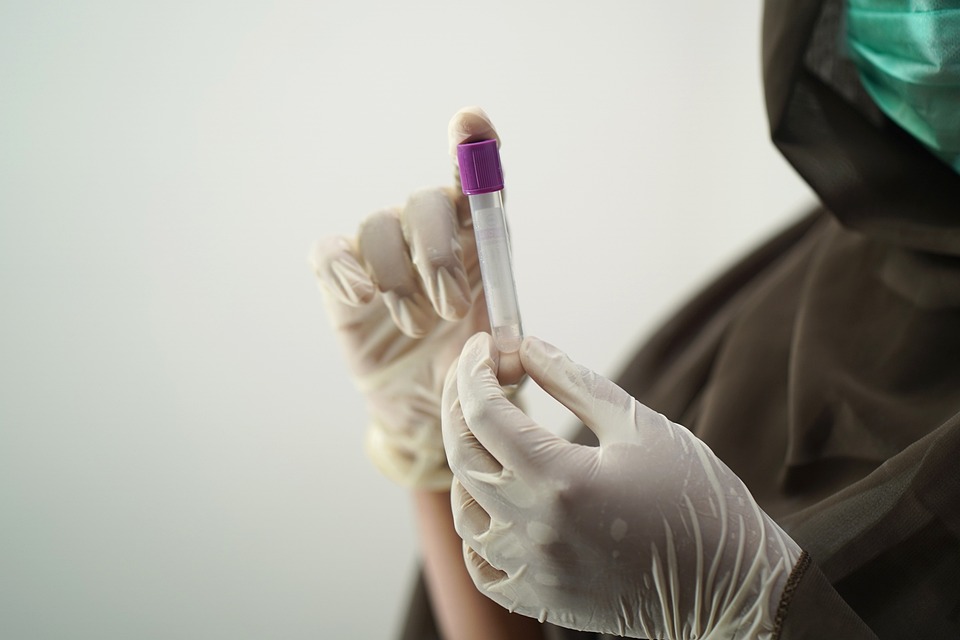Every individual ought to attempt to enhance their reproductive health, however, to realize this, it is advantageous to understand how it operates.
Semen plays a major part in male reproductive health and fertility. Most individuals are not well-acquainted with the different components involved in it.
Check out the following to get the scoop on how seminal fluid is created and why it is essential.
What Is Seminal Fluid?
Semen is a liquid that is discharged from the male reproductive gland. The semen contains sperm which can impregnate female eggs. It has seminal fluid as well, in other words, various liquids that keep sperm cells alive.
For centuries, scientists have been researching seminal fluid to investigate its functions. In the 17th century, the first sighting of spermatozoa in semen samples was recorded. It wasn’t until 1827 that the true nature of human fertilization was understood with the revelation of the ovum.
A dramatic surge of attention towards finding new ways to study sperm in the early 1900s occurred.
Scientists developed the typical procedures for the study of semen during the first 50 years of the twentieth century. Before the 1930s, semen analysis was clinically unavailable. This was attributed to the fact that there were no apparatus or techniques that could evaluate the qualities of sperm.
The creation of techniques brought useful understanding into the seminal liquid. They gained plenty of insight into its operations and how it affects men’s health. Examining seminal fluid is a contentious matter, no matter what approach is used.
For example, the analysis of sperm is considered to be the best way to assess the production and quality of sperm. However, it is an inaccurate measure of a man’s ability to reproduce. We will explore the significance of seminal fluid more in depth in this post.
What Role Does Seminal Fluid Play in Men’s Health?
Implantation
The spermatozoa are produced in seminiferous tubules. It also serves as a regulator of sperm function. Most people do not comprehend the major duties and responsibilities that this liquid carries out. The seminal fluid at the moment of conception assists in the induction of gene expression in the endometrium and modifies the immune cells.
Both are necessary for robust implantation. This implies that the amount of semen that is produced has an effect on the outcome of the pregnancy. The effect it has is also noticeable in the well-being of the young.
Fertility
More comprehensive knowledge of spermatozoa and the proteins found in semen could enhance the management of male sterility. Half of all infertility issues among couples stem from the male partner, yet the majority of treatments available focus on the female. Exploration of seminal liquid may be beneficial in helping create strategies to cope with male infertility. They could improve men’s reproductive health.
pH Balance
It is important to recognize that the acidity of seminal fluid impacts the movement and the capability of sperm to fertilize an egg. In other words, seminal fluid supports pH balance. It contributes to the quantity and movement of sperm.
Therefore, alkalinity level fluctuations can negatively affect things. Human sperm activity and capability are promoted under slightly basic conditions. The complete ways in which pH levels influence the quality of human sperm cells have yet to be fully understood. The opposite could be true as well; a slightly acidic pH level of seminal fluid may cause harm to the sperm cell membrane directly. It can also increase the amount of active oxygen, which can have an impact on sperm quantity and movement.
It is clear that seminal fluid has an immense impact on a man’s overall health. Semen is rich in minerals and helps nourish sperm and sperm cells. It also contributes to constructing an advantageous environment where sperm can be successful.
Sperm DNA
Additionally, seminal fluid may be involved in the safeguarding of sperm DNA. The seminal fluid contains a high amount of antioxidants, which are essential to safeguarding sperm cells from oxidative damage.
In other words, free radicals and oxidative stress have a negative effect on sperm DNA. This is why seminal fluid has the capacity to neutralize any scavengers that may harm male reproductive health. When it comes to procreating, it is possible that IgE antibodies within seminal fluid may be a cause of infertility.
The primary purpose of sperm and seminal fluid is to safeguard sperm cells in the female reproductive system from bacterial and fungal infections. The amount of bacteria-killing ability of the seminal fluid after the clot has been dispersed is the greatest. The effectiveness of seminal fluid in killing bacteria is totally reliant on zinc, no matter what the pH level is.
Sperm Quality
It is worth noting that certain bacteria in human semen can have a negative effect on sperm quality and reduce sperm quantity. Bacterial contamination of seminal fluid can be a factor in infertility. It is essential to take care of your reproductive health, which makes this point even more pertinent.
Prostate Health
The seminal fluid typically aids in reproductive capabilities, but it can also affect the wellbeing of the prostate. Studies show that altered seminal parameters in middle-aged men are strongly associated with:
- lower urinary tract symptoms
- prostate enlargement
- and/or bladder outlet obstruction
Experts are requesting further research to assess the influence of semen quality and other measures on urinary tract discomfort and prostate wellness. Evidence of prostate-specific antigen in the fluid could possibly point to more severe issues such as prostate cancer.
When Should I Do a Semen Analysis?
In the course of one year, the majority of couples that have sex regularly without using contraception will become pregnant. This implies that the male is climaxing inside his companion’s uterus without deliberately abstaining from the proper period of the month (but not essentially coordinating it exactly with ovulation expectation units either). The utilization of the pulling out strategy, i.e., discharging outside, is viewed as contraception, however, it has a high potential for disappointment when utilized as a birth control system.
A pair is seen as having difficulty conceiving if no pregnancy is reached after 12 months of trying (not necessarily in succession). Nonetheless, if the woman is 35 or older, because fertility becomes less reliable at that age, it is generally suggested to commence assessment after 6 months of attempting to become pregnant. If a couple has not achieved pregnancy after one year when the woman is under 35, or 6 months when the woman is over 35, then an examination of the man’s sperm should take place and an examination into infertility should begin.
How Long Does It Take to Make Sperm?
Sperm is produced continuously, similar to a factory production line and the sperm being ejaculated currently began its journey three months in the past. We often compare our patients to the workings of a cookie factory. The sperm are manufactured in a assembly-line process and then stored in the various ducts and glands associated with the reproductive system. The frequency with which the accumulation area is drained does not have an effect on the assembly line. You should clean out the storage region more frequently if you want the cookies to be fresher, though you will end up with less of them. If you don’t empty the cookie jar as often, then you will have a larger quantity of cookies, but they won’t be as fresh. However, men are not machines, and ejaculating does not always mean everything that’s been “held” is released.
Why Is Production Time Important?
This three month production has two significant implications.
Any action taken by you will have an effect on your sperm for a minimum period of three months. This encompasses beneficial activities, as well as detrimental ones (smoking cigarettes, taking drugs, taking hot baths or using saunas).
There is typically a period of four to six months that must pass after treating the man before any noticeable improvements come up in the semen analysis. It is suggested that a thorough and precise semen analysis occur first, as it could take a few months to assess the female. The man’s treatment can be done simultaneously with that of the woman, so there is no need to wait until the woman’s therapy is over.
What Happens If There Are Problems Found in the Semen Analysis?
The same individual may show big differences in his semen analysis results. Getting an accurate baseline for semen analysis is advised, so it is recommended that more than one be done. In some cases, it is necessary to do more than two assessments in order to determine the usual level of performance for a man.
If an ongoing issue is identified in your semen analysis, you should talk to an urologist experienced in male fertility. The urologist will pinpoint any issues and then treat them in order to optimize the quality of your semen. This could lessen the requirement for more complex treatments for the female partner. It is essential to eliminate any serious medical issues which could possibly result in an inadequate semen analysis. Therefore, the first thing any man should consider in examining his fertility is to perform a semen analysis.
In two out of every three cases, the specialist can collaborate with you to bring about a great improvement in your evaluation, however, in one out of every three circumstances, no cure can be discovered. In these cases, the fertility team (with the involvement of your wife’s doctor) will need to do whatever they can to accommodate them.
It is important to remember that there is no particular, miraculous measurement in a semen analysis that will determine whether or not a man’s partner will become pregnant. Some men with a very poor semen analysis may find that their partners are able to conceive without difficulty. For men who have very good semen analysis results, their partners may have difficulty conceiving. Men with favorable semen analysis outcomes will have a significantly higher pregnancy rate compared to men with unsatisfactory results.
The semen analysis will be used to investigate if there is a male component contributing to the couple’s problems in conceiving a child. If that’s the case, we’ll recommend an evaluation. The semen analysis uncovered indications that there may be particular issues present. An example of this would be a rise in the amount of white blood cells, which may be a result of an infection or inflammation. Nevertheless, most of the primary criteria have variances that are not identifiable. An example of this is there could be a few different explanations behind a reduction in sperm count or a decrease in sperm motility. A few of these reasons can lead to other serious health issues. A comprehensive inspection is beneficial in figuring out the source of an atypical semen analysis, and it aids in ruling out any medical issues.
The Effects of Semen Analysis on Treatment
The goal of thorough sperm examination is to discover if there are any male-related factors that might be causing difficulty with conceiving for the couple.
Greater than half of men who experience male factor infertility will have a cause that can be treated. Some of the reasons for male infertility include enlarged veins in the testicles, infections, chemical imbalances, issues with seminal fluid, obstructed tubes, as well as problems obtaining and/or keeping an erection and ejaculating. If medication (hormones or antibiotics) or operations (such as varicocelectomy, vasal reconstruction, or fixing a blocked ejaculatory duct) are carried out, it is likely there will be a marked improvement in the results of a man’s semen analysis.
Men who cannot be treated for their low sperm counts may still be able to become fathers using special techniques such as Extended Sperm Search and Microfeeze. Even male individuals who do not have any sperm in their semen may still be able to obtain a few active sperm via alternative means and get pregnant utilizing modern reproductive procedures. Men with no sperm at all will be informed so they can look into other possibilities.
Semen testing is a sophisticated and technical field. A semen analysis that has been carried out incorrectly or not to its full extent can overlook major issues. Unrecognized problems may unnecessarily delay a man’s treatment. A semen analysis differs from other laboratory tests in that it is solely dependent on the skill of the person conducting it. Ensure the laboratory has modern procedures and qualified, specialized technicians.
What Does Your Semen Say About Your Health?
Your semen can provide a lot of insight into your overall health, so don’t neglect any changes you may observe. The ejaculate produced during healthy sexual activity is usually a cloudy white or grey color and has a jelly-like texture, which you can see when using the withdrawal method.
In some men, semen may be yellowish. Typically, semen has a scent that is akin to bleach because of its pH level. Remember that while it is typical for semen to have a slightly yellowish hue, a clear yellow can be a sign of a sexually transmitted infection. The same applies to men with green semen.
Semen that has a brown or reddish coloring indicates that a blood vessel has ruptured, but it is not hazardous. You may notice improvements in a day or two. If the issue keeps occurring, it may be beneficial to seek advice from a physician.
Certain males may discover that their climax is dry, meaning that no semen is released even when they are strongly aroused. This is to be expected in young males, however it could be a symptom of retrograde ejaculation in older individuals who have been given prostate treatments. Male semen sensitivity is an exceedingly uncommon issue.
The health and capabilities of seminal fluid and the reproductive organs are significantly influenced by your way of life. Eating too much junk food and other nutrient-deficient foodstuff can disturb the acidity in seminal fluid. In addition to an unwholesome diet, various other components that can damage sperm quality include leading an inactive life, being overweight or obese, smoking cigarettes, and consuming alcohol.
It is never too late to improve the standard of your sperm and help your fertility. Try to consume a nutritious diet, be physically active on a regular basis, abstain from smoking, and reduce the amount of alcohol you drink. Eating healthily and exercising regularly will help to maintain the acidity level of your seminal fluid and can boost the performance of your reproductive organs.







